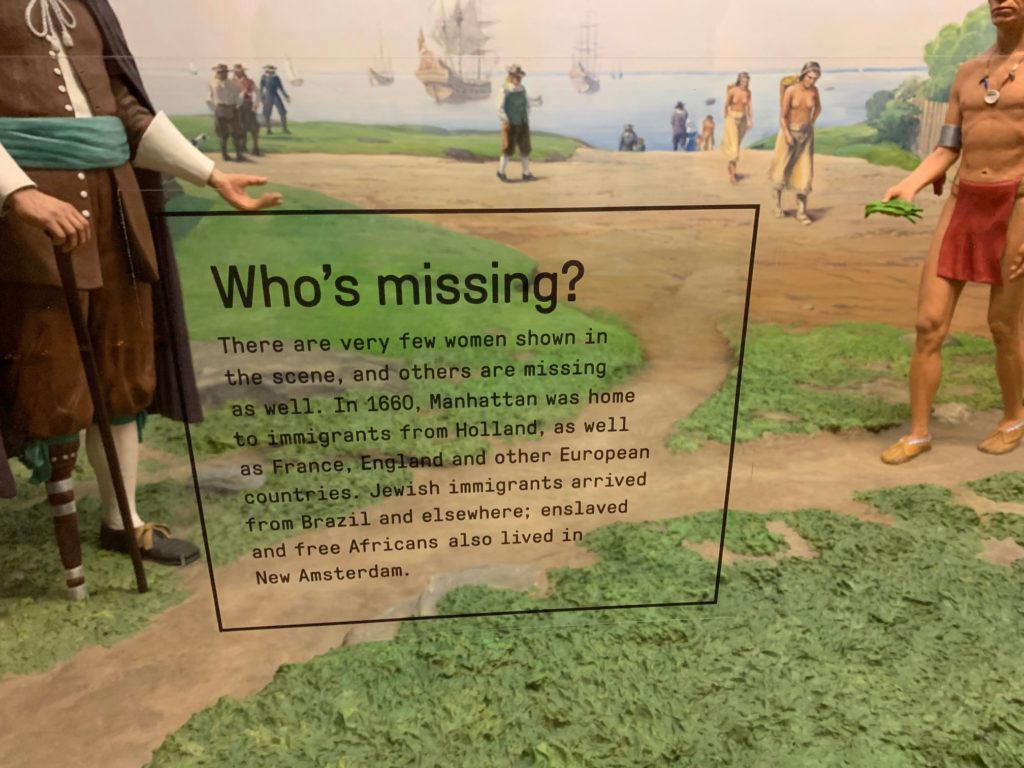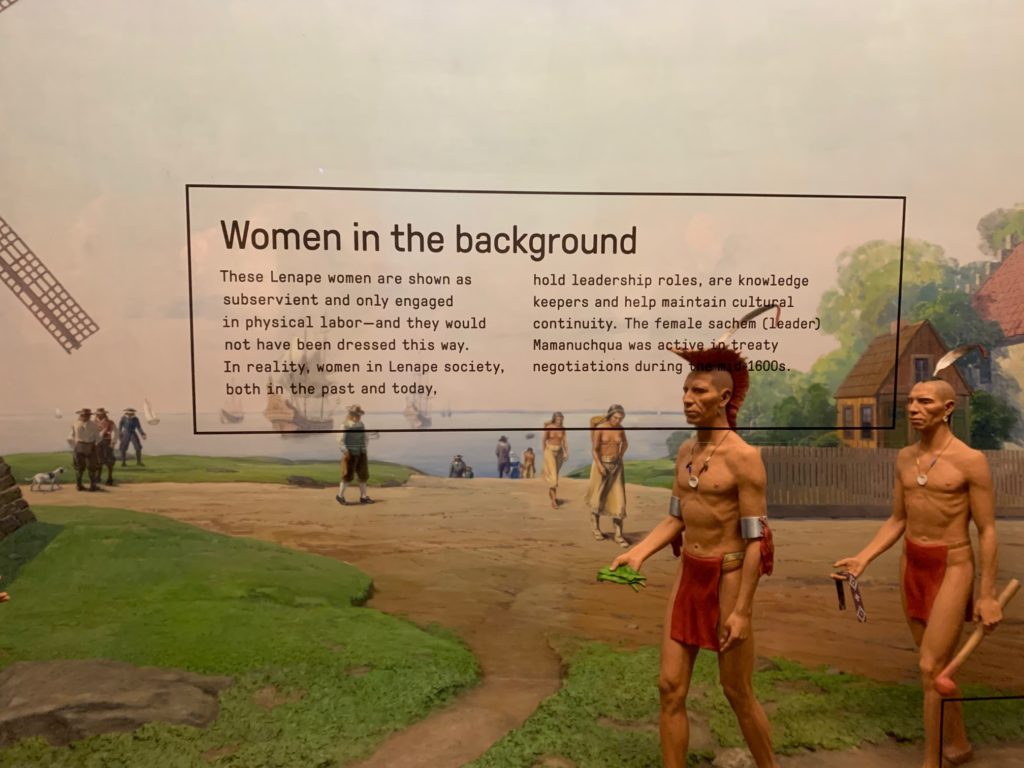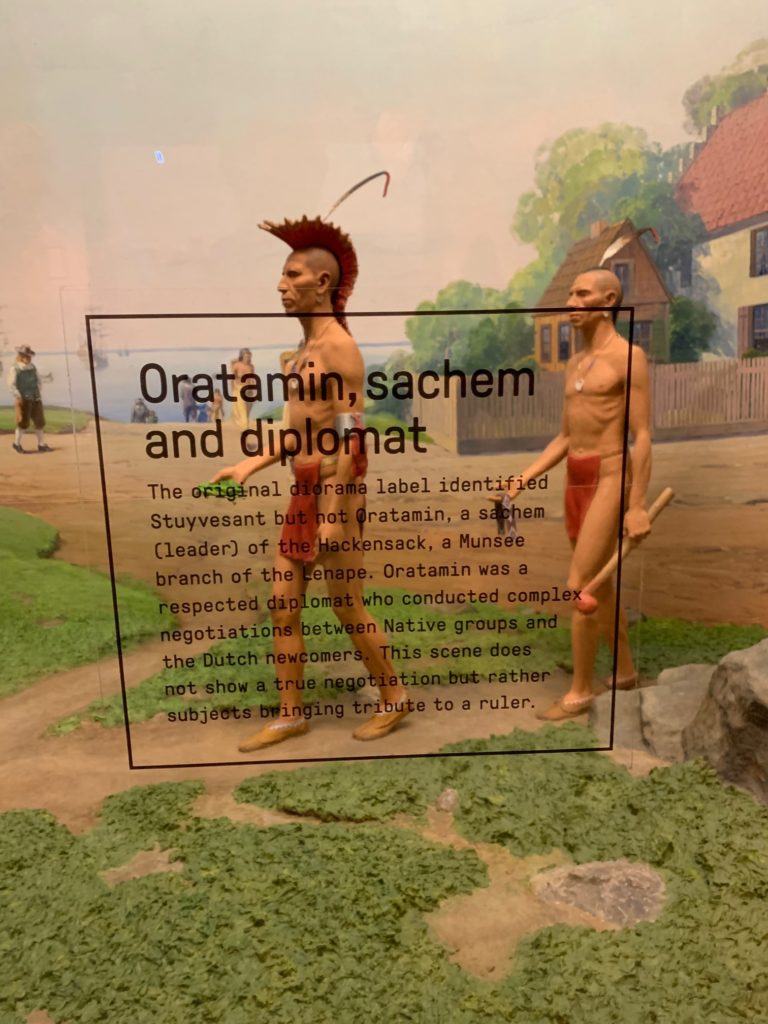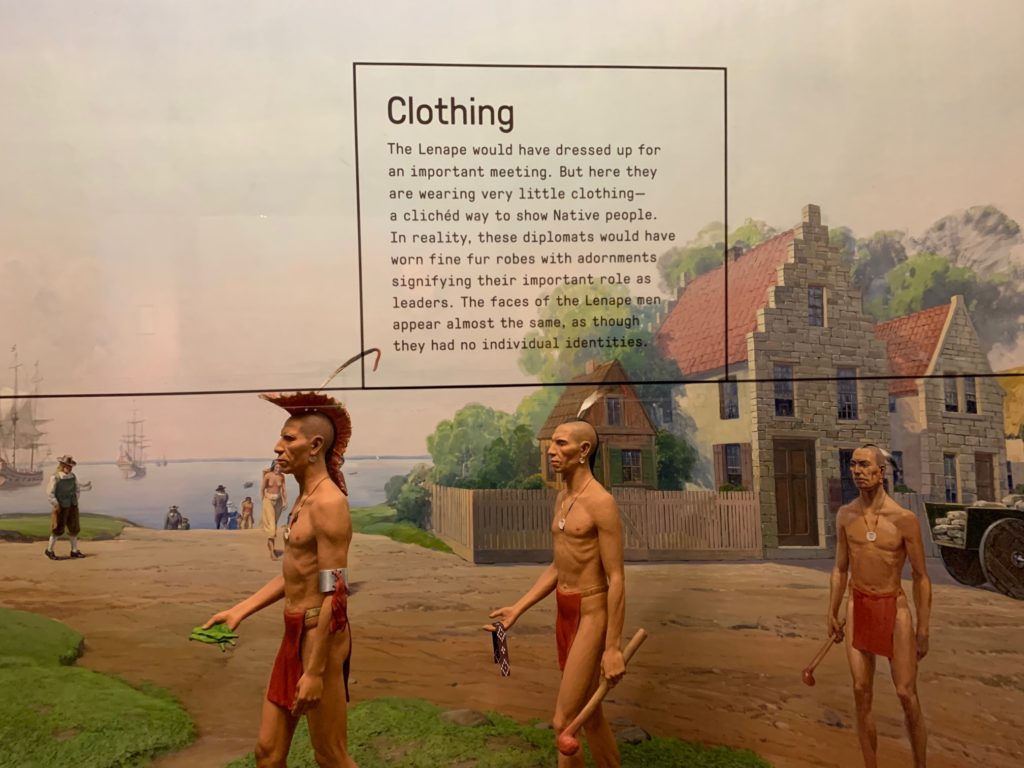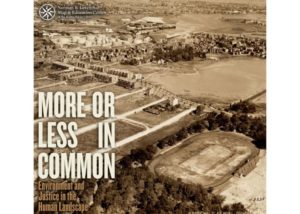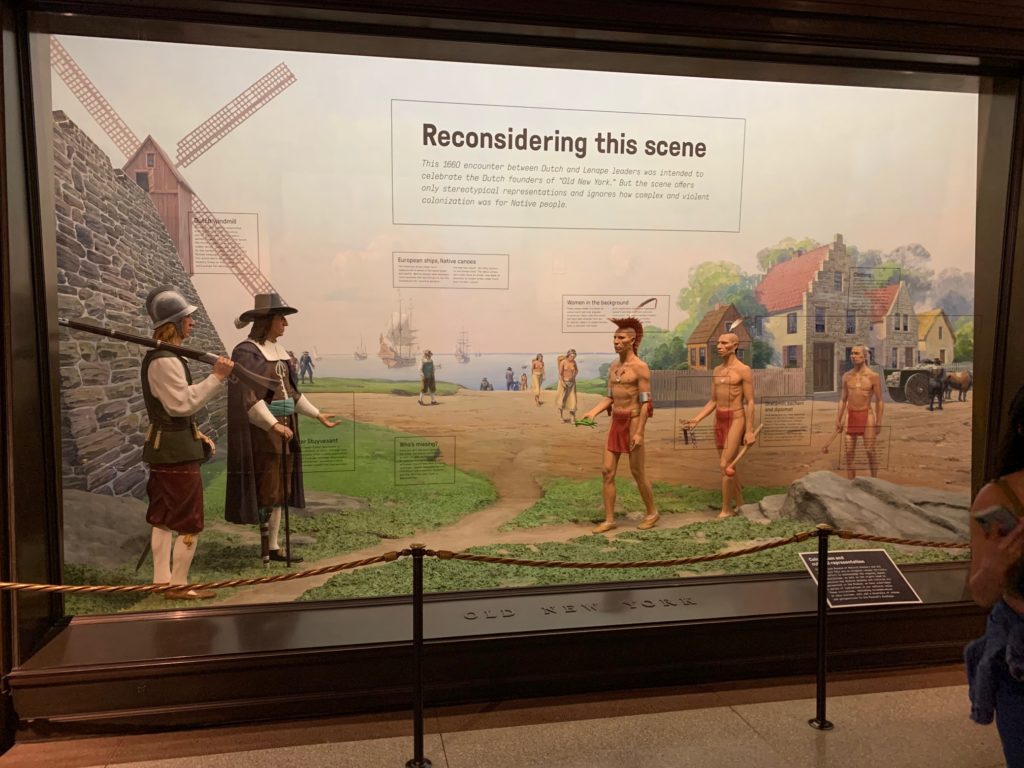
Rewriting History
When people complain about “erasing” history, what they often mean is that the fixed historical frame of reference that they normally carry with them is being challenged. In these cases, history is not really being erased but is being rewritten to incorporate new evidence, previously neglected evidence, and the addition of new perspectives that shed even greater light on events of the past. (Note the emphasis on evidence here!) History is always being rewritten in this way.
Last month, I visited the American Museum of Natural History in New York City for the first time in years. One diorama caught my attention, because it illustrates the need to rewrite history and then goes about doing so in an intriguing way.
The diorama (see the picture above) appears in the Theodore Roosevelt Memorial Hall and was created in 1939 to celebrate the Dutch ancestry of the Roosevelt family, who helped found the museum. The scene takes place on the southern tip of Manhattan and is meant to represent a diplomatic meeting in 1660 between Lenape leaders and the Dutch, the first Europeans to settle in this area of New York.
The display is problematic in its use of Native American stereotypes that commonly circulated at the time of its creation. Mind you, the diorama was created in consultation with some of the top historians in the country at the time. Today, the museum creatively takes these misrepresentations head on by adding glosses directly to the window of the diorama in order to highlight individual components of the display that are misleading and wrong. Here are some examples.
I can’t think of a better physical illustration of how and why history requires rewriting than in the way the original diorama and the glosses interact with one another here. In some cases, the distinctions being made are subtle; others, like the lack of clothing on the Lenape, are more blatant. Working together, these elements of the scene both valorize and validate the cultural and political power position of the Europeans. The glosses counteract this effect by pointing out the mechanisms that work to create this implicit assumption of cultural superiority.
Let’s imagine a diorama that incorporates the new evidence and different perspectives that the glosses highlight. We see a multicultural community, even at this early stage of European settlement in North America; women have a more prominent presence in the scene; and the Native Americans in the display are shown to have a cultural and political life that is just as rich and complex as the Europeans. With the addition of these elements, we not only end up with a diorama that represents better history, but this history is much more interesting.
Even more, the diorama raises more interesting questions. When I used to view similar displays as a kid, the question that would immediately come to mind is, “Aren’t the Indians cold walking around with hardly any clothes on?” In our new, hypothetical diorama, better questions emerge: If the Dutch control this area of New York, why are there non-Dutch people and how did they get there? Why are women present in the Native American diplomatic party and absent in the European one? What did the two sides talk about, and how did the Native Americans feel about a fort suddenly appearing on land they freely used to use? These questions, and the answers to them, lead to a more dynamic, more realistic, display of the historic meeting between two different cultures. We end up with a display that better illustrates the human drama of the situation, rather than a simplistic dramatization of the inevitable European conquest of an inferior culture that does not even know how to dress properly for the weather.
Today, the Lenape are located in Kansas, Oklahoma, Wisconsin, and Ontario, CN. Imagine being forced off our land here on the East coast and relocated to various parts of the Midwest by another group of people! Such a thought is not that difficult to imagine because we are witnessing first-hand something similar today in Ukraine. I think we can all agree that the human drama playing out there does not call for simplistic stereotypes of the Ukrainians, even though Putin is doing his best to employ them in order to justify the incursion. So if, it turns out, the way we have commonly represented history rests on simplistic stereotypes, we have a moral imperative to rewrite that history. The American Museum of Natural History recognized that the history it was presenting in the case above indeed needed to be rewritten. And the benefit to doing so is better, more accurate, and more interesting history!
—Anthony Vaver, Local History Librarian
Suggested Reading:
* * *
Nature Notes: Signs of Spring
You don’t need to travel to New York like I did to learn about natural history! All you have to do is read Annie Reid’s Nature Notes for April and then head outdoors to look for the early signs of spring here in Westborough.
* * *
Mapping Social Justice in the Environment
The Leventhal Map & Education Center at the Boston Public Library has a new exhibit that you can visit both in-person and online that looks at questions of social justice and injustice that necessarily arise when we consider the environment and humanity’s place in it.
More or Less in Common: Environment and Justice in the Human Landscape presents posters, maps, and images of the American landscape to show how decisions about the environment often affect groups of people in different ways.
* * *
Did you enjoy reading this Westborough Local History Pastimes newsletter? Then subscribe by e-mail and have the newsletter and other notices from the Westborough Center for History and Culture at the Westborough Public Library delivered directly to your e-mail inbox.

